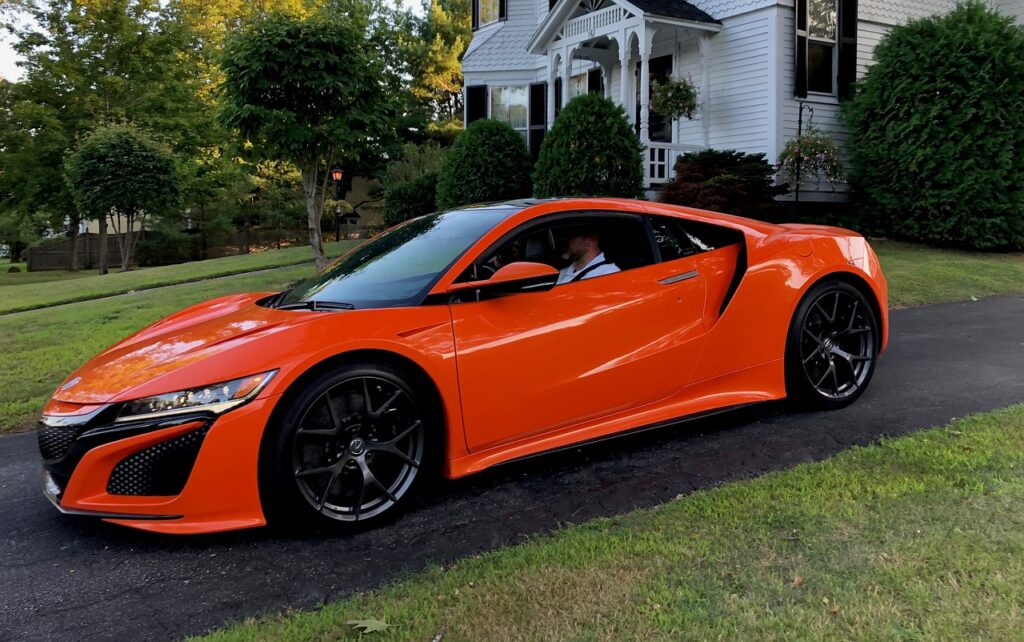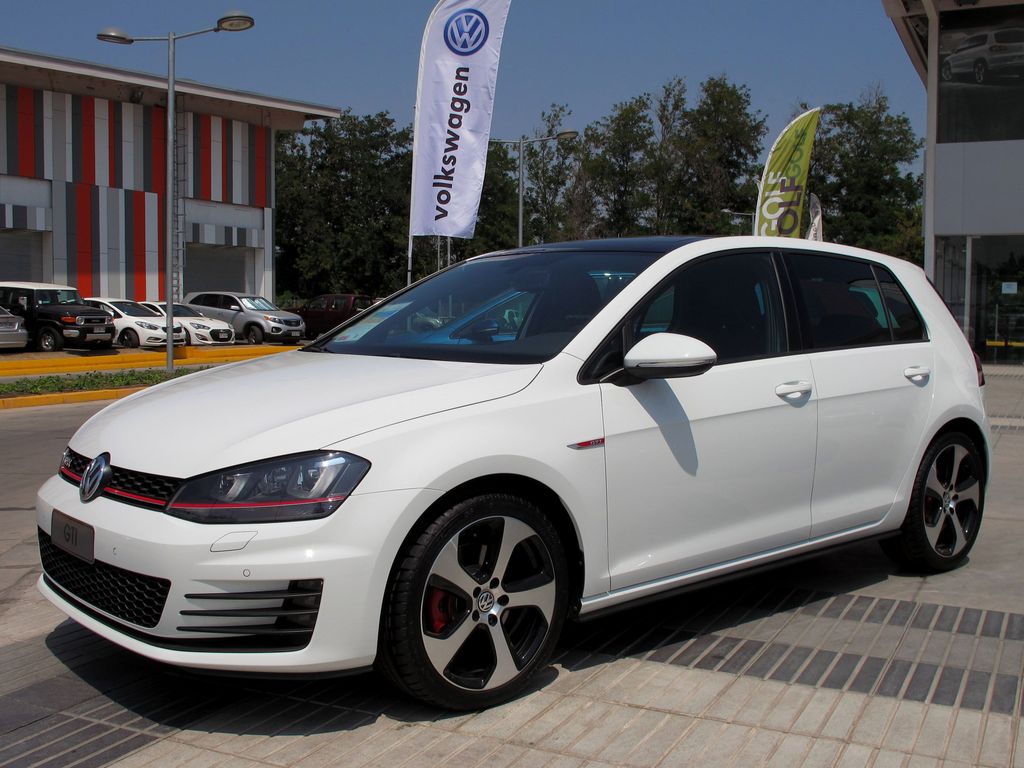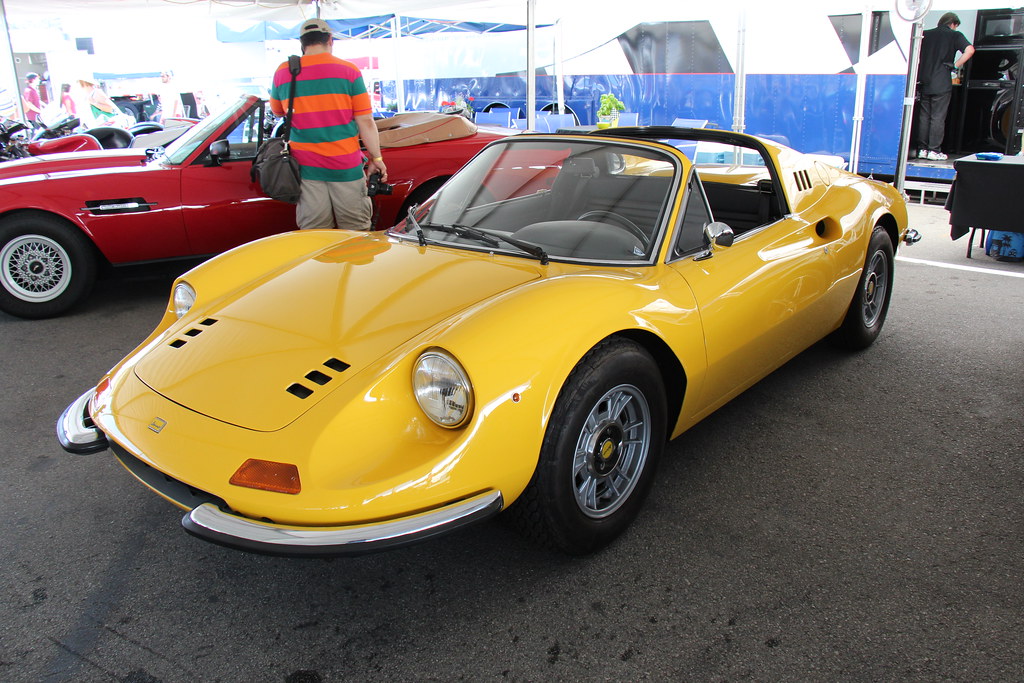
For many, the dream of owning a luxury supercar, a marvel of engineering and design, represents the pinnacle of automotive aspiration. These vehicles are more than just modes of transport; they are symbols of status, power, and often, a lifelong passion for performance and beauty. Yet, in a surprising twist for some of the world’s wealthiest and most famous individuals, the sheer act of having the money is often not enough to secure a spot behind the wheel of a brand-new, exclusive model.
It’s a perplexing paradox in the ultra-luxury automotive market: despite vast fortunes and global recognition, some celebrities find themselves on an unspoken, yet very real, ‘blacklist’ from purchasing specific high-end vehicles. This isn’t about affordability; it’s about adhering to the stringent, sometimes unwritten, rules and expectations set by brands fiercely protective of their image and exclusivity. From unauthorized modifications that clash with a brand’s aesthetic to actions perceived as disrespectful, these automakers aren’t shy about wielding their power.
The reality is, car companies, particularly those in the upper echelons like Ferrari and Bugatti, exert significant control over who gets to own their most exclusive creations. They don’t just sell cars; they curate an image, a legacy, and a community. This article dives deep into the fascinating world of celebrity car bans, revealing twelve surprising instances where fame and fortune couldn’t override the strict policies and proud standards of the automotive elite.

1. **Kim Kardashian and Family**The Kardashian-Jenner clan is synonymous with luxury, social media influence, and a seemingly endless collection of high-end vehicles. Their presence alone can turn any product into a viral sensation, yet even this level of star power hasn’t been enough to grant them unrestricted access to Ferrari’s most coveted machines. The story surrounding Kim Kardashian’s alleged ban from buying special-edition Ferraris quickly made headlines, highlighting the brand’s unwavering commitment to its own rules.
Ferrari reportedly confirmed that Kim Kardashian is indeed banned from purchasing special editions, citing that the entire Kardashian clan was “not taking care of their Ferraris.” This vague accusation left many wondering about the precise nature of the transgression. Was it a lapse in routine dealership maintenance that irritated the Italian marque, or perhaps instances of their supercars appearing less than pristine on their globally watched reality show, *Keeping Up With the Kardashians*? The brand chose not to elaborate, leaving room for speculation.
Pop Buzz suggests that the limitation for Kim Kardashian might stem from either her ownership of rival Lamborghini vehicles or her well-known habit of extensively color-wrapping her cars. Ferrari, known for its iconic Rosso Corsa and meticulously crafted finishes, might view such alterations, even temporary ones, as an affront to its design philosophy and brand integrity. This suggests that loyalty to the brand’s aesthetic, not just its mechanical components, plays a significant role in its owner relations.
It’s clear that the issues extend beyond Kim herself. The Kardashian-Jenner family’s history with the brand has been turbulent, with Tyga’s Ferrari debacle in 2017 adding to the narrative. Despite their immense wealth and influence, the family’s repeated run-ins with Ferrari’s strictures underscore the fact that even for the most famous individuals, owning an exclusive Ferrari is indeed a privilege, not an inherent right.
Read more about: Tour These 14 Celebrity Homes That Were Featured on Zillow Before Their Epic Sales!

2. **Justin Bieber**Justin Bieber, a global pop sensation, has always lived life in the fast lane, often accompanied by a rotating fleet of exotic cars that mirror his flamboyant persona. However, his enthusiasm for personalizing his rides and his occasional lapses in judgment have reportedly landed him on Ferrari’s list of individuals no longer welcome to purchase their limited-edition models. His case stands out as one of the most famous examples of a celebrity reportedly clashing with an automotive giant.
The saga began with his 2011 Ferrari F458 Italia, which he famously customized to a vibrant blue. This modification, along with wrapping the car, installing wide-body kits, and even slapping his name on a fresh coat of paint, was reportedly deemed “tasteless” by the notoriously image-conscious Italian automaker. Such significant alterations stray far from Ferrari’s philosophy of preserving the original design and inherent value of their machines, often seen as mobile works of art.
Beyond the aesthetic transgressions, Bieber’s conduct as an owner also drew Ferrari’s ire. He was reportedly on his final warning after a series of incidents, including crashing a car while trying to evade paparazzi, and attempting to resell a newly customized Ferrari for more money. The act of ‘flipping’ a new car, especially one with such bold modifications, goes directly against Ferrari’s efforts to control its secondary market and reward loyal collectors.
Perhaps the most astonishing reason cited by Spanish newspaper Marca for his ban was a particularly humorous incident: Bieber reportedly went partying in L.A., took a taxi home, and then completely forgot where he had parked his Ferrari for two weeks. While a funny anecdote to many, for Ferrari, it likely underscored a perceived lack of respect and care for their esteemed product, culminating in a reported ban from future Ferrari purchases.
Read more about: Tour These 14 Celebrity Homes That Were Featured on Zillow Before Their Epic Sales!
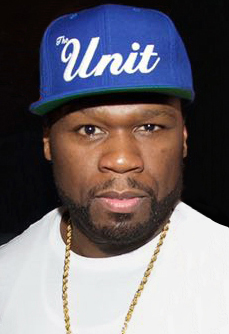
3. **50 Cent**Curtis Jackson, better known as the rapper 50 Cent, is no stranger to public display and controversy. His social media presence is often unfiltered, a quality that apparently did not sit well with the meticulously managed public image of Ferrari. The incident that led to his alleged ban from the brand illustrates just how sensitive these luxury automakers can be about perceived flaws in their products.
The trouble started when the battery of his Ferrari 488 reportedly died. A situation that, for any other car owner, might simply involve a quick call to roadside assistance, turned into a brand crisis for Ferrari when 50 Cent decided to document it for his millions of followers. He promptly called a tow truck, and once his magnificent supercar was hoisted onto the flatbed, he snapped a photo and shared it on social media.
The image, depicting a Ferrari 488 being towed, was a clear red flag for the Prancing Horse. Ferrari is zealous about protecting its reputation for peak performance and reliability, and a public image of one of its cutting-edge models requiring a tow truck, regardless of the cause, was an unwelcome sight. Even if the issue was as simple as a battery dying from the car being parked for an extended period, the perception of unreliability was enough to trigger their displeasure.
In the world of ultra-luxury cars, a negative post from a high-profile celebrity can have far-reaching implications, creating ripples of doubt about a brand’s quality and service. For Ferrari, ensuring its cars are always seen in the best possible light is paramount, and 50 Cent’s candid social media update reportedly earned him a spot on their unofficial blacklist.
Read more about: Buyer’s Remorse in Every Sip: 15 Craft Beer Tasting Pitfalls Connoisseurs Wish They Could Undo
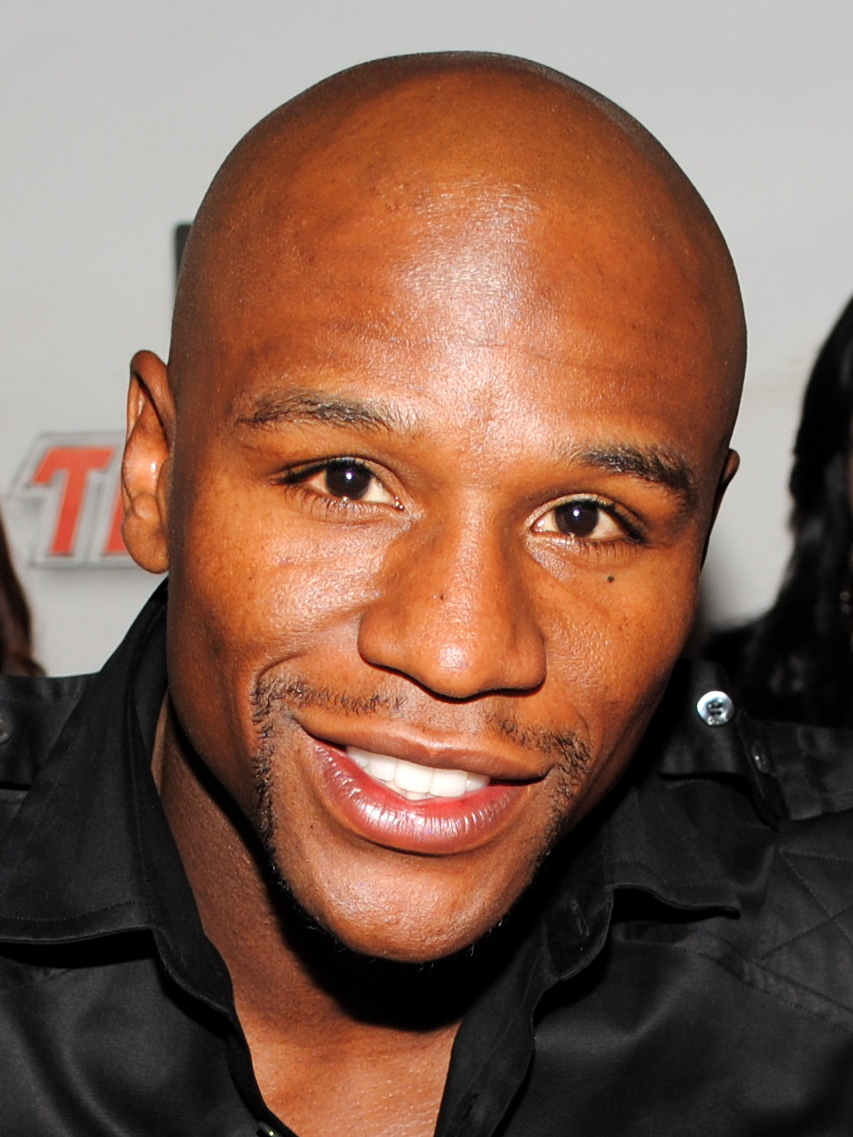
4. **Floyd Mayweather Jr.**Floyd “Money” Mayweather Jr. is legendary not just for his boxing prowess but also for his extravagant lifestyle, which includes an eye-watering collection of supercars. His competitive spending and penchant for quick turnover, however, have put him at odds with the strict policies of not one, but two, elite automotive brands: Ferrari and Bugatti. His experiences highlight the premium these companies place on ownership loyalty and market stability.
Mayweather’s issues with Ferrari began after he reportedly acquired a car simply to “keep up with his friend 50 Cent.” While such a motivation is common among the ultra-rich, his subsequent actions were not. He sold the Ferrari within a year of buying it, a move that directly violated one of Ferrari’s crucial, albeit often unstated, rules. To prevent market speculation and the practice of ‘car flipping,’ Ferrari typically requires new car owners to retain their vehicles for at least one year.
This policy is designed to ensure that their limited-edition vehicles end up in the hands of genuine enthusiasts and collectors who appreciate the brand’s heritage, rather than those looking to make a quick profit. Mayweather’s swift resale reportedly led to him being deemed unwelcome at Ferrari dealerships for future purchases. It’s a clear message: loyalty and respect for the brand’s intentions are valued over sheer purchasing power.
His troubles didn’t stop with Ferrari. Mayweather also faced a ban from Bugatti, another pinnacle of automotive luxury. The reason, again, revolved around his quick turnover of exclusive assets; he was reportedly blacklisted after “selling a coveted spot on the waiting list.” Bugatti, like Ferrari, operates with long waiting lists and extreme exclusivity for its vehicles, making the act of profiting from a reservation a serious breach of etiquette.
Read more about: Beyond the Ring: An Exclusive Deep Dive into Floyd Mayweather’s Multi-Million Dollar Automotive Sanctuary
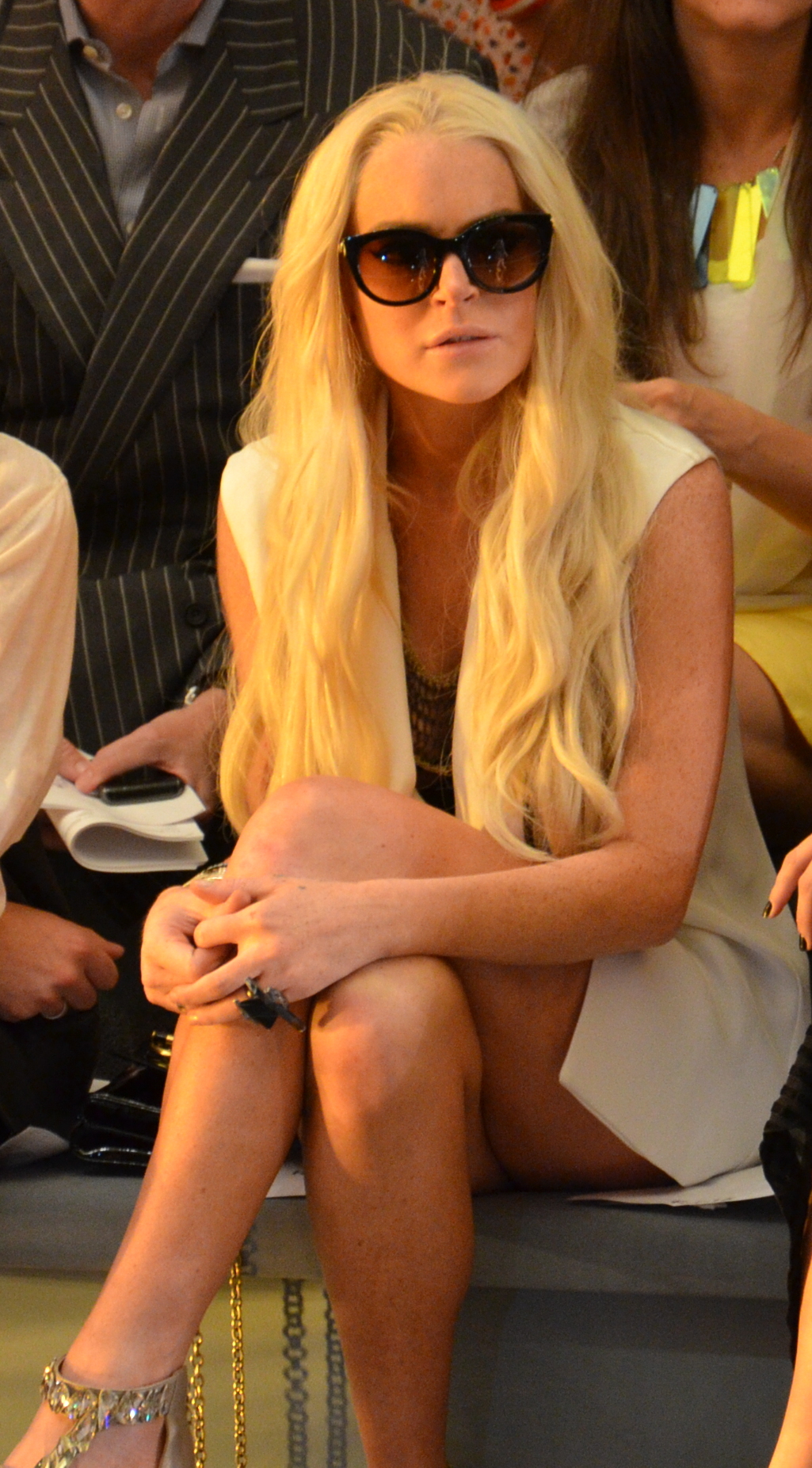
5. **Lindsay Lohan**Lindsay Lohan, the once-prolific actress, has navigated a career marked by both significant success and highly publicized personal struggles. While she has commendably turned her life around in recent years, the echoes of her past legal issues, particularly those related to alcohol and drug abuse, have reportedly impacted her eligibility to purchase new Ferraris. This case illuminates the extent to which luxury brands scrutinize the public image and perceived values of their potential owners.
According to the Unión Rayo website, Ferrari’s objection to Lindsay Lohan stemmed directly from her well-documented legal troubles. The brand, which meticulously cultivates an image of sophistication, power, and prestige, seemingly found her past conduct to be incompatible with the values it wishes to associate with its vehicles. The decision suggests that personal reputation is just as important as financial capability when it comes to joining the exclusive club of Ferrari owners.
Even though Lohan has made significant strides in her personal life and successfully rebuilt her career, the supercar manufacturer reportedly “won’t budge” on its stance. This steadfast refusal underscores the enduring nature of such blacklists and the conservative approach luxury brands take in protecting their public perception. For Ferrari, the association with any negative press, even from years past, is a risk they seem unwilling to take.
This particular instance has led many to question the brand’s moral compass, pondering the implied ethical hierarchy of their selection process. It prompts a critical examination of where Ferrari draws its lines, especially when juxtaposed with the potential ownership by individuals whose backgrounds might be even more questionable but remain out of the public eye.
Read more about: The 14 Most Expensive Jewelry Thefts Targeting Hollywood Stars in the Last Decade

6. **Deadmau5**Joel Zimmerman, globally recognized as the electronic music producer Deadmau5, is celebrated for his distinctive sound and equally distinctive persona, often involving elaborate, mouse-themed helmets. This flair for individuality naturally extended to his car collection, leading to one of the most infamous clashes between a celebrity owner and Ferrari over unauthorized modifications. His “Purrari” became a global internet sensation, but not in the way Ferrari desired.
Deadmau5 purchased a Ferrari 458 and proceeded to give it a completely unique, over-the-top custom wrap. The car was transformed into a bright blue spectacle, adorned with cartoon graphics, most notably featuring a pixelated “Nyan Cat” with a Pop-Tart for a body, leaving a trail of rainbows in its wake. This wildly creative and highly visible modification was dubbed the “Purrari” and quickly achieved viral internet meme status, captivating audiences worldwide.
While the “Purrari” garnered immense attention and became instantly recognizable, Ferrari apparently took the stance that “all attention isn’t good attention.” The automaker is known for its zealous protection of its intellectual property, brand image, and the pristine aesthetics of its vehicles. Deadmau5’s vibrant, cartoon-laden wrap was a dramatic departure from Ferrari’s sophisticated design language, and they viewed it as an unsanctioned modification that diluted their brand identity.
The result was a swift and decisive response from Ferrari: Deadmau5 was banned from purchasing new cars from the company, and he received a cease and desist letter regarding the “Purrari” itself. He complied, removing the distinctive wrap and selling the 458 Spider shortly after. This incident serves as a stark reminder that when it comes to luxury marques like Ferrari, creative expression must always defer to brand control and perceived prestige.
As we navigate deeper into the often-murky waters of luxury automotive exclusivity, it becomes clear that the reasons for these celebrity bans are as varied as the personalities involved. Beyond the straightforward issues of car flipping or extreme modifications, some instances delve into the nuanced realms of contractual disputes, the impact of public relations gaffes, and even a brand’s expectations of loyalty and investment. The intricate dynamics of maintaining VIP status with the world’s most exclusive automotive brands reveal a fascinating power struggle between celebrity influence and corporate control.
Read more about: The Exclusive Club: Why Even Superstars Like Bieber and Kardashian Can’t Always Buy a Ferrari
7. **Tyga**The rapper Tyga found himself entangled in a dispute with Ferrari that went beyond mere image management, touching upon the fundamental obligation of car ownership: making payments. His situation highlights that even in the world of luxury, financial commitments are non-negotiable, and failing to uphold them can have severe, lasting consequences with these exclusive marques.
The story, widely circulated, recounts that Tyga had leased a 2012 Ferrari 458. However, he reportedly failed to make his payments on time, a lapse that no automotive company, least of all Ferrari, would overlook. This wasn’t merely a matter of a late fee; it escalated to the point where the automaker took decisive action, ultimately repossessing the vehicle.
The repercussions for Tyga extended far beyond the repossession of that specific Ferrari 458. The brand reportedly delivered a clear message: it would not be doing business with him ever again. This firm stance from Ferrari underscores their zero-tolerance policy for contractual breaches, especially when it comes to the financial obligations associated with their high-value assets.
This incident was not an isolated event for the Kardashian-Jenner associated musician. Fans might recall that Kylie Jenner and Tyga were involved in their own Ferrari debacle in 2017, where his ride was repossessed due to alleged lack of payment before being returned. Such repeated financial issues demonstrate a pattern that luxury brands are keen to avoid, making it highly unlikely Tyga will ever be granted access to a new Ferrari, affirming the brand’s strict rules around loyalty and financial responsibility.
Read more about: The Exclusive Club: Why Even Superstars Like Bieber and Kardashian Can’t Always Buy a Ferrari
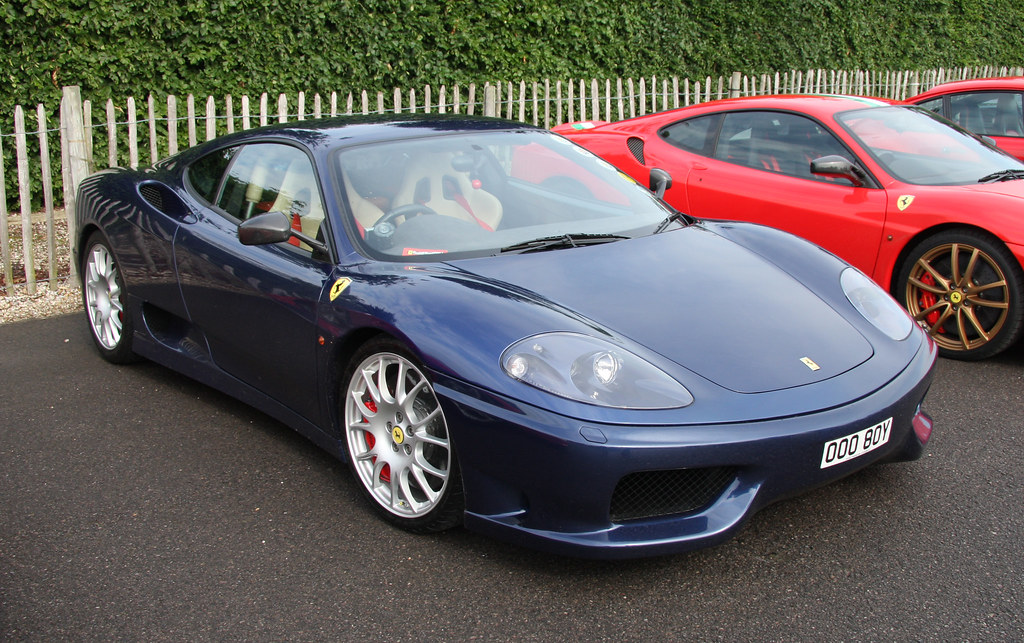
8. **Bill Ceno**In a tale that exposes the often-unwritten rules of Ferrari ownership, web designer Bill Ceno found his deep passion for the Prancing Horse insufficient to secure a highly sought-after model. His case vividly illustrates Ferrari’s unwavering commitment to its long-term collectors, prioritizing a specific type of loyalty that extends beyond mere financial capability and a vast existing collection.
Ceno is described as a highly successful web designer and a seemingly levelheaded Ferrari enthusiast with an impressive collection of classics, including icons like a Ferrari F50 and an Enzo. When the extremely rare LaFerrari Aperta was released, Ceno, like many devoted collectors, reached out to Maranello, prepared to pay the full sticker price to add this new marvel to his garage.
However, the company brass delivered a surprising and firm refusal. Their rationale was simple yet absolute: despite his extensive collection of rare Ferraris, he hadn’t bought any of them new directly from the manufacturer. This revelation struck at the heart of Ferrari’s exclusive system, which limits sales of special editions and even custom vehicles to “collectors” who have already “invested” in multiple entry-level cars from the brand.
For Ferrari, the act of purchasing new vehicles over time demonstrates a sustained, direct commitment to the brand, a form of loyalty that is seemingly valued above even owning a garage full of classic, highly desirable Ferraris acquired on the secondary market. Ceno’s experience is a stark reminder that to join the inner circle for Ferrari’s most exclusive creations, a history of consistent, direct new car purchases is often paramount, leaving even self-proclaimed Ferrari royalty out of luck if they haven’t followed this precise path.
Read more about: Your Ultimate Pre-40 Bucket List: 14 Incredible Countries You Absolutely Must Explore!

9. **Chris Harris**Automotive journalist Chris Harris’s encounter with Ferrari stands as a unique and telling example of how far luxury brands will go to control their public narrative, even when confronted by seasoned industry critics. His story underscores the intense protectiveness these marques have over their image and performance claims, extending even to how their vehicles are reviewed by the media.
Harris, an acclaimed automotive journalist renowned for reviewing nearly every vehicle under the sun, published a bombshell article in Jalopnik in 2011. In his scoop, he alleged that Ferrari was building its test cars for journalists to a higher caliber than its production models, effectively rigging reviews to ensure consistently glowing feedback. He claimed that press cars were tuned to deliver more power and superior handling, with Ferrari sometimes even demanding to know the track a magazine would use for testing to ensure optimal setup.
Such an accusation, coming from a respected voice in the industry, was a direct challenge to Ferrari’s integrity and reputation for engineering excellence. The brand, which prides itself on being the winningest in motorsports history, reacted with what was perceived as thin skin. Although Ferrari eventually responded and denied the allegations, they retaliated by banning Harris from receiving press cars and access to tests for a period.
Ironically, Harris’s defiant stance eventually led to a reconciliation. He continued to acquire Ferraris for review, famously stating in a 2013 review for The Drive, “This [458 Italia] belongs to Ferrari and I’m probably not supposed to be driving it, but I’m not going to dwell on that. Someone kind of subcontracted it to me, let’s say.” This persistence, reportedly aided by figures like Jeremy Clarkson, ultimately saw him removed from the blacklist, proving that sometimes, persistent and truthful journalism can force even the most image-conscious brands to eventually come to terms with critical analysis.
Read more about: Shaquille O’Neal’s Epic Journey: Tracing the Colossal Footprints of a Legend’s Career, from High School Hardwoods to Championship Courts
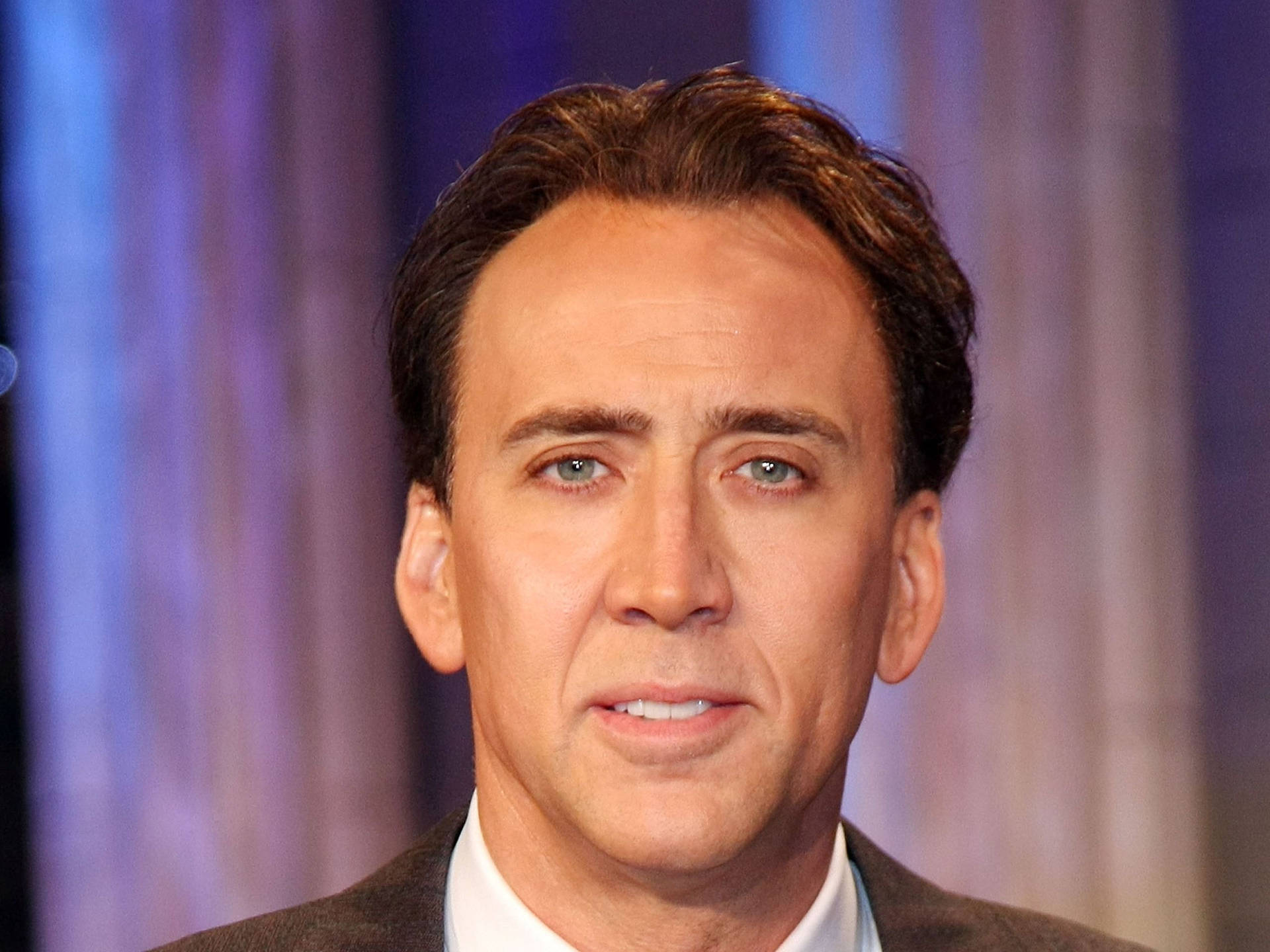
10. **Nicolas Cage**The acclaimed actor Nicolas Cage’s alleged ban from Ferrari presents a different facet of luxury automotive exclusivity, one rooted not in aesthetic transgressions or contractual breaches, but in personal financial woes. His situation illuminates how a brand like Ferrari can perceive financial instability and the forced liquidation of assets as damaging to the aspirational image it works so hard to project.
Nicolas Cage, known for his prolific acting career, reportedly encountered severe financial struggles that necessitated a difficult decision: auctioning off his extensive car collection. This collection, like those of many Hollywood elites, undoubtedly included high-value vehicles, quite possibly several Ferraris, given the brand’s appeal to discerning collectors.
The act of having to sell off one’s luxury cars, particularly those from prestigious marques, due to financial difficulties is reportedly seen as a cause for offense by brands like Ferrari. For an automaker that meticulously cultivates an image of success, stability, and unbridled luxury, a celebrity owner forced to divest their assets due to financial distress can be viewed as an unwelcome association. Such circumstances, however unfortunate, can inadvertently tarnish the brand’s aura of invincibility and exclusivity.
While the specifics of Ferrari’s communication with Cage remain private, his inclusion on lists of allegedly banned celebrities suggests that his financial woes and the subsequent public auctioning of his cars prompted the marque to distance itself. This instance underscores that for ultra-luxury brands, the perceived financial health and stability of their clientele can be as crucial as their adherence to specific ownership rules, all in the service of maintaining an untarnished brand identity.
Read more about: The Exclusive Club: Why Even Superstars Like Bieber and Kardashian Can’t Always Buy a Ferrari

11. **Tom Cruise**When it comes to Bugatti, a brand synonymous with unparalleled hypercar engineering and extreme exclusivity, even a seemingly minor public faux pas can have major implications. Movie megastar Tom Cruise discovered this the hard way, not through a modification or a resale, but through a fleeting moment on a red carpet that reportedly left the meticulous French automaker unimpressed and prompted a ban.
The incident occurred at the red carpet premiere of *Mission Impossible III*. Cruise arrived in his Bugatti Veyron with his then-wife Katie Holmes. As he went to open her door, a simple gesture turned into a “debacle” as he reportedly struggled to open it, taking several attempts. While online speculation suggested the door might have been locked from the inside, Bugatti evidently viewed the moment as an awkward and undesirable public display.
For a brand like Bugatti, whose vehicles are paragons of design, performance, and flawless operation, any moment that suggests clumsiness or imperfection associated with their product, particularly on a global stage, is seen as bad publicity. The highly exclusive marque couldn’t forgive Cruise for what they perceived as a blunder, a moment that disrupted the seamless, opulent image they strive to project around their hypercars.
Consequently, Tom Cruise was reportedly blacklisted from Bugatti’s coveted waiting list. This decision serves as a powerful reminder that with brands of such prestige, every interaction, every public appearance, and every detail matters. The pursuit of perfection extends beyond the car itself to the experience of owning and presenting it, making even a celebrity of Cruise’s caliber susceptible to the brand’s stringent standards for public representation.
Read more about: Trouble on the Tarmac: Six Convertibles Reviewers Wish They Never Drove Off the Lot – Unpacking What Makes a Drop-Top Truly Dreadful

12. **Flo Rida**Rapper Flo Rida’s ban from Bugatti highlights a stark reality for celebrity luxury car owners: personal conduct, particularly when it involves legal infractions, can severely impact their standing with ultra-exclusive brands. His situation demonstrates that these automakers are fiercely protective of their public image and will distance themselves from anything that could cast their vehicles in a negative light.
The incident that reportedly led to Flo Rida’s ban occurred in 2011, shortly after he purchased a Bugatti Veyron, a car that represents the zenith of automotive engineering and luxury. He was pulled over by the police and subsequently charged with drink driving after failing a breathalyzer test. This legal trouble, involving a serious offense and a highly visible luxury vehicle, quickly became a matter of public record.
For Bugatti, whose cars are symbols of sophistication, power, and responsible luxury, an association with a DUI charge was unequivocally bad PR. The brand is extremely sensitive to its public perception, and having one of its flagship vehicles linked to such a negative incident, especially involving a high-profile celebrity, was deemed unacceptable. It ran contrary to the image of prestige and careful ownership that Bugatti meticulously cultivates.
As a direct consequence of this incident, Bugatti reportedly added Flo Rida’s name to their blacklist, prohibiting him from future purchases. This case unequivocally demonstrates that beyond vehicle care or modification rules, personal legal issues and the resulting negative publicity can be a definitive deal-breaker for these ultra-luxury car manufacturers, underscoring their commitment to protecting their brand’s esteemed reputation above all else.
Read more about: Investing in Excellence: A Wirecutter Guide to the 7 Best High-End Grills for Unparalleled Outdoor Cooking
The fascinating world of celebrity car bans is far more complex than simple monetary access; it’s a intricate dance between immense wealth, public image, and the unyielding control luxury brands exert over their coveted creations. From the seemingly trivial, like a color wrap or a red carpet door struggle, to more serious transgressions such as contractual defaults or legal issues, the reasons are diverse. These stories reveal that for the most exclusive marques, ownership is less about buying a product and more about joining a meticulously curated club, where brand loyalty, respect for heritage, and an unblemished public persona are often prerequisites. Ultimately, these brands are selling not just a car, but a legacy, and they are fiercely protective of who gets to embody that prestige.

